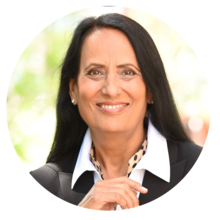About this Presentation
This presentation is a question and answer session directed by the audience. Freedom of choice means that it is the audience’s choice of what the presentation is about. The first question was a two-part question Eli Abramov (a coauthor of the S&T manuscript): Q1. Based on what we have seen in this conference, we have exposed a lot of items that are not included in the tree. What is the impact of these items on the S&T tree? Q2. In diving down in levels 6 and 7 in the project management tree, we have exposed some errors and need for further development. Again, what is the impact on the tree? Brief Answer: We developed the steps needed in the S&T which is not the implementation of the tree. Eli expanded on errors in DBR where most people want to identify the bottleneck but in a DBR implementation the first step is to choke the release so that WIP is reduced and the remaining WIP piles up in front of the bottleneck. In retail, Eli is explaining the six steps under level 4 then decides that the steps are obvious. After examination he found that they are unknown with respect to implementation. The first action has to lead to significant results! The first changes in distribution implementation were also discussed. 2. Even Fortune 500 can’t implement their strategy. Do we need an entity in the tree that makes accountability a part of the tree? Brief Answer: Has the step been taken? (If not, why not?) What is the result? Is that what was expected? (If not, why not? Was the tree wrong? Was the implementation wrong?) The person responsible for completing the task is accountable for the results. Mismatches between responsibility and accountability are handled with the evaporating cloud. Once the cloud is used firefighting is reduced significantly. The thinking processes are implemented in an organization when you reach the sustain stage of the S & T tree. Q3. Last year you made some predictions about the global economy. What are your thoughts on the geopolitical scene? China and India GDP growth is about 10% per year. Massive changes in both economies have occurred in the last decade. Demand for labor is approaching the supply therefore wages increase. If wages increase then workers become consumers. If materials and labor costs go up and the Chinese government holds prices constant then the company margins go down. The companies only have 5-6 clients for their products. They do not have a sales and marketing function. If you hold the currency fixed then you are subsiding the whole world. They are creating a distortion in the value of their currency and products to get more sales. Chinese government is revaluing their currency 5% per year. The magnitude of change in demand will create a massive consumer market and world inflation. We will see interactive bottlenecks everywhere while supply goes down significantly. Eli’s question: Q4 Shall I talk about the future of America? Answer: America is the 1 power in world. Power comes from economic power. In order to have economic power you must trade. The US doesn’t trade where the new markets are growing: China, India, and Europe. The US must have air transportation to compete. Air cargo prices must go down significantly. It is 4000% more expensive for air versus water transportation. Eli told the story of the C5 airplane overhaul facility. Eli told the stories of the TOC introduction in the US Air Force (and Navy) and Boeing. If reality is built on inherent simplicity and people are good then win-win solutions can be built. If we use these concepts then what is the limit of what one person can do? I can disappear and TOC will continue.
What Will You Learn
To help you get the most value from this session, we’ve highlighted a few key points. These takeaways capture the main ideas and practical insights from the presentation, making it easier for you to review, reflect, and apply what you’ve learned.

Instructor(s)
Eliyahu M. Goldratt

Ms Alka Wadhwa
Alka Wadhwa is an experienced consultant and process improvement expert with over 24 years of expertise in the Theory of Constraints (TOC), Lean Six Sigma, and organizational performance optimization. She has successfully led projects in healthcare, financial services, and manufacturing, driving significant improvements such as a 67% boost in hospital operations and a 140% increase in outpatient visits.
Previously, Alka Wadhwa spent 17+ years at GE Global Research Center, where she led initiatives to enhance various GE businesses through advanced technologies, process redesign, and system optimization. Founder of Better Solutions Consulting, LLC, she specializes in using TOC, Six Sigma, and data analytics to streamline operations and build high-performance teams.
Her work has earned her multiple accolades, including the Empire State Award of Excellence in healthcare.

Dr Gary Wadhwa
Dr. Gary Wadhwa is a Board Certified Oral & Maxillofacial Surgeon with extensive experience in the field. He completed his Oral & Maxillofacial Surgery training at Montefiore Hospital, Albert Einstein College of Medicine in Bronx, NY, and has served as an Attending at prestigious institutions like St. Peters Hospitals, Ellis Hospital, and Beth Israel Hospital in NY. With a career spanning over two decades, he was the former CEO and President of a group specialty practice in NY from 1994 to 2015. Dr. Wadhwa holds an MBA from UT at Knoxville, TN, and has undergone additional training in System Dynamics at MIT, Health System Management at Harvard Business School, and Entrepreneurship and healthcare innovations at Columbia Business School. Committed to expanding access to Oral & Maxillofacial Surgery care, he is currently engaged in a meaningful project to provide healthcare services to underserved populations in inner city and rural areas through non-profit Community Health Centers.
